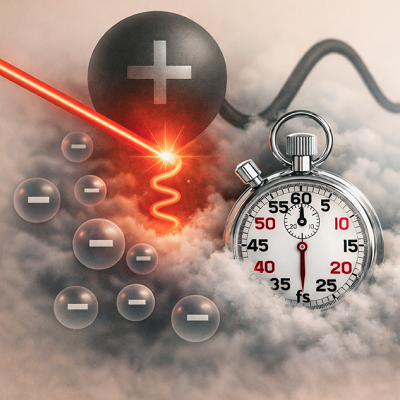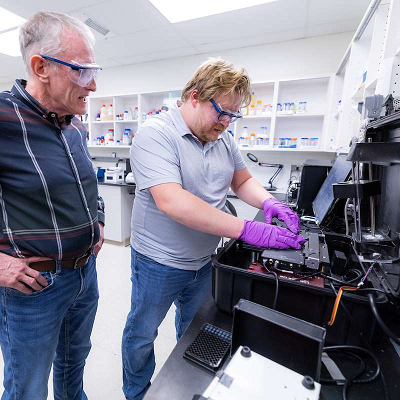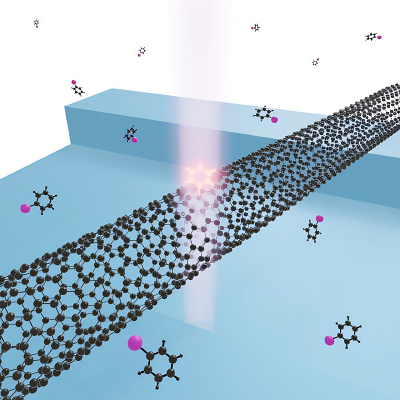Electrochromic (EC) materials, one of the key "green" technological components for sustainability and energy savings, have piqued the interest of academia and industry alike. Tungsten oxide (WO3) is among the most extensively researched EC materials that is widely used in today's "smart windows." One popular EC approach is the reversible insertion of small ions into electrode materials. Thin films of WO3 can therefore change their color from clear to deep blue by adjusting lithium ion (Li+) insertion under a low voltage bias. As low voltage operations are beneficial for a multitude of applications, Li+ intercalated WO3 (LixWO3) is a viable option for EC device applications.
However, Li+ insertions are not always reversible. After several cycles, these ions aggregate in the film and erode the electrochromic effect. This, in turn, affects optical modulation and long-term durability, both of which are essential for practical deployment of EC devices. The insertions result in reversible Li+, irreversible Li2WO4 formation, and irreversible Li+ trapping. The "irreversible formation of Li2WO4" degrades electrochromism, and the Li+ 'trapped' at deep sites renders the ions immobile, resulting in irreversibility. In essence, evaluating the implications of both types of irreversibility is critical.
In a recent study published in Applied Surface Science (made available online on August 13 2021, and to be published in Volume 568 of the journal on December 1 2021), scientists from Tokyo University of Science and the National Institute for Materials Science (NIMS), Japan, collaborated to quantitatively assess the irreversibility of LixWO3 thin films. Discussing the key concerns that the study addresses, Associate Professor Tohru Higuchi from Tokyo University of Science, who led the study, observes "There are two critical questions that arise: First, is irreversible Li2WO4 formation different from irreversible Li+ trapping? Second, can these irreversible components coexist?" He adds, "Conventional measures are unable to differentiate between the two irreversible components. As a result, we conducted a quantitative examination to offer solid answers to these questions."
The scientists devised a quantitative evaluation method that combines in situ hard X-ray photoelectron spectroscopy (HAXPES) and electrochemical measurements. HAXPES is used to investigate buried interfaces, whereas electrochemical tests are used to examine corrosion properties. The intercalation of Li+ results in a redox reaction that changes the oxidation state of tungsten (W) ions from W6+ to W5+. Based on this change, HAXPES can evaluate "reversible Li+" and "irreversible Li+ trapping." However, evaluating "irreversible Li2WO4 formation" using HAXPES is challenging. Dr Takashi Tsuchiya, a Principal Researcher at NIMS and co-author of the study, explains why: "W ions in Li2WO4 have a stable oxidation state because they exist in the W6+ form. As a result, HAXPES is unable to evaluate the irreversibility caused by Li2WO4 formation. Electrochemical measurements, on the contrary, can distinguish 'reversible Li+' from the two irreversible components. Therefore, integrating both methods enables the distinction and quantitative evaluation of all three components."
To conduct the electrochemical measurements, the scientists built a LixWO3-based redox transistor on the flat surface of a lithium-ion conducting glass ceramic (LICGC). They also built an electrochemical cell with a WO3 thin film as the semiconductor and a LICGC substrate as the electrolyte to conduct HAXPES measurements. Furthermore, they employed in situ Raman spectroscopy to assess the influence of Li+ insertion on the LixWO3 structure. They were able to successfully determine the increase in crystallinity caused by Li+ insertion. The proportions of reversible Li+, irreversible Li2WO4 formation, and irreversible Li+ trapping were calculated to be 41.4%, 50.9%, and 7.7%, respectively.
The scientists believe that their study will help develop and design improved EC materials and devices. "For several years, the main impetus for EC research and development has been potential applications in energy-efficient buildings and aircraft. However, there are several other applications as well, such as the energy-saving and vision-friendly electronic paper displays," says Dr Kazuya Terabe, Principal Investigator of the International Center for Materials Nanoarchitectonics at NIMS and a co-author of the study, "Moreover, our findings broaden the application possibilities by providing the basis for the future development of high-performance WO3-based EC devices."
Untangling the irreversibility conundrum is certainly a big step forward, but there is still much work to be done, although the pace is sure to go up!
Read the original article on Tokyo University of Science.







